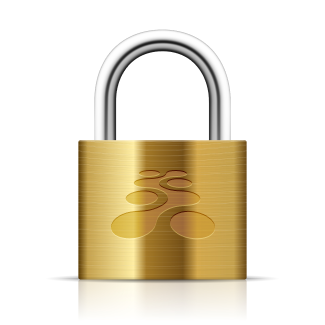Safeguarding your data and securing your devices against cyberattacks has become an absolute necessity. As technology evolves, the risks associated with online threats continue to grow exponentially.
With hackers using increasingly sophisticated techniques, it’s crucial for businesses to be proactive in protecting themselves from these potential hazards. Below, we’ll take a look at some effective strategies and best practices that can help fortify your data and devices against cyberattacks, ensuring that you can navigate the virtual world safely and confidently.
What are Cyberattacks?
Cyberattacks are deliberate and malicious attempts by hackers to gain unauthorized access, manipulate, or steal sensitive information from computer systems. These attacks can target individuals, organizations, governments, or other entities that operate in the digital space.
Cybercriminals employ various tactics such as malware, phishing scams, ransomware, and denial-of-service attacks to exploit vulnerabilities in software and networks.
The threat of cyberattacks poses significant risks to your business for several reasons, and a successful attack can lead to severe financial losses due to stolen data or disrupted business operations. The cost of recovering from a cyberattack can be substantial and may include expenses related to system restoration, legal fees, customer notification procedures, and reputational damage.
Cyberattacks can also result in the loss of intellectual property or trade secrets that are critical for maintaining a competitive advantage. Businesses rely heavily on their digital infrastructure for storing valuable information such as customer databases, financial records, proprietary algorithms or formulas, marketing strategies and plans.
How to Recognize a Cyberattack
Cyberattacks come in various forms and recognizing them is the first step in protecting your data and devices. One common type of cyberattack is phishing, where attackers use deceptive emails or websites to trick individuals into revealing sensitive information such as passwords or credit card details. Signs of a phishing attack include suspicious email addresses, misspellings, and requests for personal information.
Another type of cyberattack is malware, which includes viruses, worms, trojans, and ransomware. Signs of malware infection may include slow system performance, unexpected pop-up windows, or unfamiliar icons or software appearing on your device without authorization. It’s important to be cautious when downloading files or clicking on links from unknown sources to avoid inadvertently installing malware on your device.
Other signs of malicious activities can include sudden network slowdowns or disruptions, unauthorized access to accounts or systems by unfamiliar users, unusual account activity such as password changes or new security settings being enabled without your knowledge.
Preventing Cyberattacks – Best Practices
To prevent cyberattacks and safeguard your data and devices, you’ll need to implement best practices and technologies to keep your devices and network protected. Keeping all software up to date is crucial as updates often include security patches that address vulnerabilities that hackers can exploit.
Using strong and unique passwords for each of your accounts can provide an extra layer of protection. If you’re not already using a password manager within your organization, it’s a good idea to do so as soon as possible so your team can utilize complex passwords and securely store them.
Another key practice is implementing two-factor authentication (2FA) whenever possible. This adds an extra step in the login process by requiring users to provide a second verification factor, such as a fingerprint or one-time code sent via SMS or email. This greatly reduces risks, even if someone manages to obtain your password.
Utilizing reliable antivirus software is also essential in preventing cyberattacks. These programs scan files for any potentially malicious content before they are executed on your system, helping identify and block threats before they can cause harm.
Regularly backing up important data both locally and off-site ensures its safety in case of an attack or hardware failure. Backups should be conducted on secure servers or encrypted external storage devices.
How to Respond to Cyberattacks
In the unfortunate event of a cyberattack, it’s essential to respond swiftly and effectively to minimize damage and ensure business continuity. The following steps and procedures can guide you in handling such incidents.
Isolate the affected system or device from the network immediately to prevent further spread of malware or unauthorized access. Disconnecting from the internet while retaining evidence for investigation is crucial.
Next, alert your IT department or cybersecurity team about the incident promptly. They will utilize their expertise and tools to analyze the attack and understand its impact on your systems and data. It is vital to ensure that all employees are aware of what has occurred so they can take necessary precautions like changing passwords.
Simultaneously, initiate an incident response plan (IRP) tailored specifically for cyberattacks. This plan should outline roles, responsibilities, communication channels, escalation procedures, and guidelines for investigating and remediating incidents. Designate a specific team leader who will coordinate efforts throughout this process to maintain organization and efficiency during a potentially chaotic period. If you don’t already have a response plan created, now is the time to do so.
Remember that prevention is key; however, being prepared with a robust response plan is equally important in today’s threat landscape. Regularly update your response plan as new threats emerge so that you can adapt quickly when faced with cyberattacks.
Staying Informed to Avoid Cyberattacks
When it comes to preventing and avoiding cyberattacks, it’s essential to stay informed about the latest threats and vulnerabilities in the cybersecurity landscape. This can be done by regularly reading industry publications, attending conferences or webinars, and staying up to date with relevant security patches and updates for software and devices. Due to how often the cyber landscape changes, it’s wise to partner with a company that specializes in cybersecurity services to ensure your business is always protected from emerging threats.
Your organization should invest in continuous education and training for your employees. Cybersecurity awareness programs can help teach your staff about common attack methods such as phishing emails or social engineering techniques and provide them with the insights they need to identify and avoid these attack attempts.
Staying safe from cyberattacks requires keeping up with the latest threats, which can be a full-time job in itself; fortunately, you don’t have to go it alone, and a reputable local managed service provider can help keep your organization secure.
Austin Managed Security Services – How We Can Help You with Your Cybersecurity Needs
At Stradiant, we understand how important it is to protect your company with proper cybersecurity measures. Our team offer a range of solutions like cybersecurity risk assessment in Austin to help meet your needs, and we’re dedicated to staying ahead of emerging threats and providing comprehensive, proactive protection.
With our knowledge and experience in the field, we can assist you in implementing effective strategies that will fortify your data and devices against cyberattacks.
Whether you’re looking for guidance on safeguarding your sensitive data or you need assistance with securing your business networks, we have the expertise to address all aspects of cybersecurity. From conducting thorough vulnerability assessments to developing customized security plans, our solutions are tailored to suit your specific requirements.
When you partner with us, you can rest easy knowing you have a trusted ally in the ongoing fight against cyberthreats. Let us help you protect what matters most–your data and devices. Reach out to us today for personalized cybersecurity services tailored to your needs.

